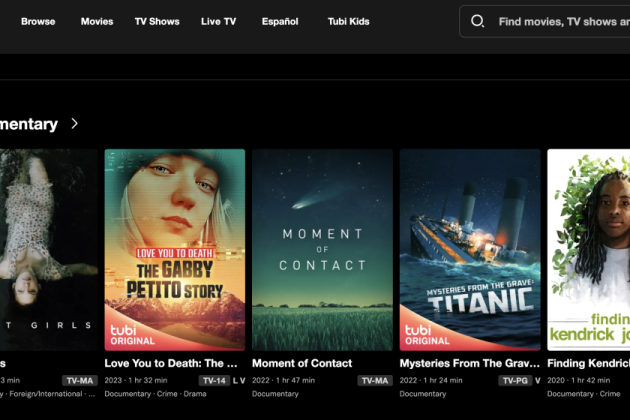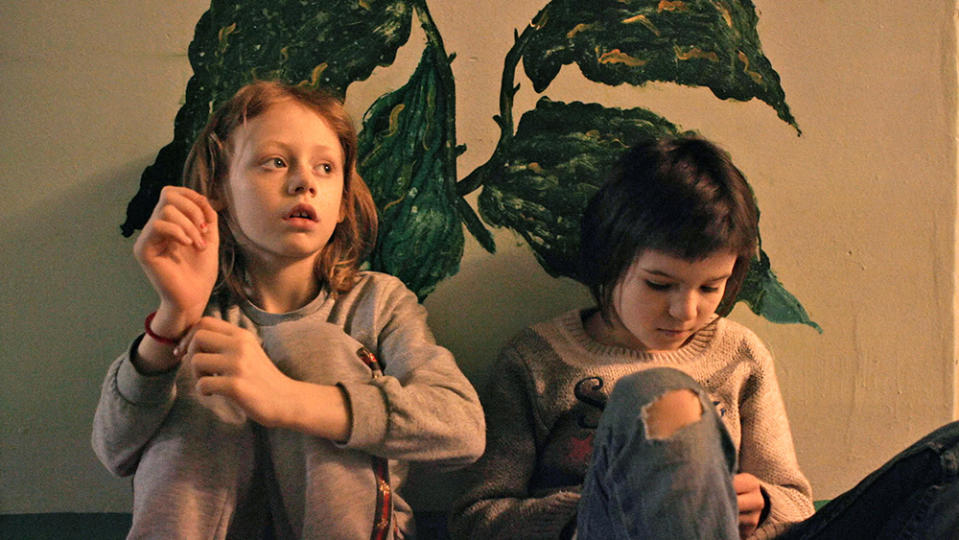Documentary Community Still Wary as AVOD and FAST Channels Proliferate
- Oops!Something went wrong.Please try again later.

Is AVOD the solution for struggling indie doc filmmakers?
“Beyond Utopia,” “A Still Small Voice,” “Deep Rising,” “It’s Only Life After All,” “Going Varsity in Mariachi,” and “The Grab” are all documentary titles that garnered good reviews, positive audience feedback and plenty of media attention at major film festivals including this year’s Sundance and last year’s Toronto International Film Festival. But despite the high visibility, each title is still seeking distribution.
More from Variety
The chances of any of the six titles garnering a highly coveted distribution deal isn’t likely given the state of the entertainment industry at present. The dismal distribution landscape has forced some nonfiction filmmakers to turn to substantially less lucrative alternatives, such as ad-supported VOD, or AVOD channels, and revenue-sharing arrangements to get their work seen.
That list include filmmakers Violet Columbus and Ben Klein, who directed the 2022 Sundance grand jury prize documentary winner “The Exiles.” The duo negotiated an all-rights video on-demand release via Gravitas Ventures in December. Gravitas seeks out licensing deals with SVOD platforms. After the SVOD window, they release the project on AVOD services.
Sana Soni, director of sales and distribution at Giant Pictures/Drafthouse Films, talked up the AVOD alternative at the inaugural Washington D.C.-based DC/DOX film festival last month.
“If HBO, Netflix, or Hulu didn’t buy all the rights to your film, that doesn’t mean you won’t find a distributor for your film,” says Soni, whose company acquires film with a revenue-share model and seeks licensing deals with all platforms including AVOD. “AVOD platforms like Peacock, Tubi and Pluto are also viable options.”
In February Giant Pictures acquired U.S. theatrical and VOD rights to the Oscar-nominated documentary feature “A House Made of Splinters.” The film, which debuted at the Sundance Film Festival in 2022, screened at over 20 film festivals around the world but lacked American distribution even after it made the AMPAS feature documentary shortlist in December 2022.
While Soni says that there are opportunities for docu filmmakers to make six figures via AVOD distribution, she concedes it’s not the norm.
“If your movie hits a chord with the right audience on an AVOD platform, you can make a good amount of money,” she says. “But each film’s mileage can really vary. I think certain titles can really strike a chord, but it’s so hard to project which ones will, and it’s dependent so much on the platform merchandising,” she adds. “Is the platform for whatever reason going to push this movie forward on their homepage or continue to suggest it to viewers around the app? That can make all the difference. That can be very hard to police as a distributor.”
Unlike an SVOD licensing deal, there is no upfront payment for an AVOD deal. Instead payment depends solely on performance, which sounds promising but since AVOD services typically license a mass amount of content instead of individual films from distributors like Gravitas Ventures, Giant Pictures, and FilmRise, it can be difficult for a docu to stand out on AVOD.
“The problem with these AVOD platforms at the moment is that there’s a real lack of curation,” Cinetic Media’s Jason Ishikawa says. “There is just a ton of content. So, for us, there’s still a limited appeal of going directly onto an AVOD service unless there’s going to be a component of marketing that pushes the film.”
RELATED CONTENT: How AVOD, FAST and SVOD Co-Exist in Modern Distribution
But with the steady decline of theatrical docu distribution, the chances of creating word of mouth for a film via reviews prior to an AVOD release or even a licensed SVOD release are slim. Generating any media for an indie docu that isn’t acquired by the major streamers or broadcasters requires a filmmaker and a producer who knows how to market. If the nonfiction market continues to dry up, docu helmers will not only have to market their own projects, they will also need to be as good in business as they are at making movies.

Jessica Edwards is one of those filmmakers.
In March, Edwards premiered her latest docu “Skate Dreams” at SXSW. It’s the same festival where she debuted her inaugural feature docu “Mavis!” in 2015. About the life of music legend Mavis Staples, the docu was quickly acquired by HBO.
Edwards was hoping for a similar outcome for “Skate Dreams.”
“Was I surprised that we were in a different landscape?” says Edwards. “One hundred percent,”
About the rise of women’s skateboarding, “Skate Dreams” profiles a diverse group of women whose pursuit of self-expression and freedom has helped create an international movement. Prior to 2023, the docu had all the right ingredients for a major SVOD distribution deal: female empowerment, diversity, a sports focus, and charismatic personalities. But due in part to corporate consolidation along with the demand for only high-concept IP, “Skate Dreams” did not find a home with an SVOD or broadcaster.
Ultimately Edwards paid aggregator Premiere Digital a fee to place “Skate Dreams” on digital platforms. While Premiere is distributing the “Skate Dreams,” Edwards owns the rights to the documentary and created the pitch form, the film’s poster, and trailer and is doing her own media for the doc.
“I’m only paying (Premiere) for access, not publicity or marketing support,” says Edward, who is going to wait until next year to place her film on an AVOD.
“I will make more money from a rental and sales perspective if I keep it on TVOD for a while,” she says. “Nobody has shown me that the AVOD model works for a filmmaker.”
Orly Ravid, founder of The Film Collaborative, a nonprofit focused on distribution education, says that while financial success on an AVOD can happen, it’s difficult.
“AVOD can be great and create a meaningful five or six-figure revenue, but it’s not for your average doc or your average indie drama or indie comedy without names,” says the former senior counsel at Tubi. “It’s for genre films or films with specific niche audiences. So, AVOD is not a huge boon for everyone, but it has been for commercial works and some other works that are hits. But I get that some filmmakers are going to try AVOD because it’s low cost and it can work quite well. It’s worth trying, but it’s not a huge boon for most.”
While the payout from AVOD for filmmakers may be substantially lower than an SVOD deal, Ishikawa says that AVOD platforms offer something SVODs do not: transparency.
“For the longest time, we have few indicators when a film hits a streamer like Netflix or Amazon or Apple, particularly as an original,” Ishikawa says. “There’s not a lot of outside metrics that are publicly communicated to understand the breadth of people watching it. But AVOD, because it’s supposed to pay out a percentage of ad-based revenue that it is creating on a film, there’s a real opportunity to parse those numbers and figure out how a film is performing. So, there is an appeal for that.”
However, Submarine Entertainment sales agent Josh Braun cautions that AVOD should not be considered a magic solution for the problems plaguing the indie doc market.
“AVOD is a little bit like the Wild West,” says Braun. “It’s a path that a film can take, but the deals that could be out there for AVOD are not comparable to an SVOD service buying your film as an original or even as a licensing deal. But in this difficult landscape where films are having trouble getting out there, certain films are clinging to (AVOD) because otherwise there’s not much else.”
(Pictured: Documentary vertical on Tubi, the Fox-owned FAST channel platform.)
Best of Variety
Sign up for Variety’s Newsletter. For the latest news, follow us on Facebook, Twitter, and Instagram.

